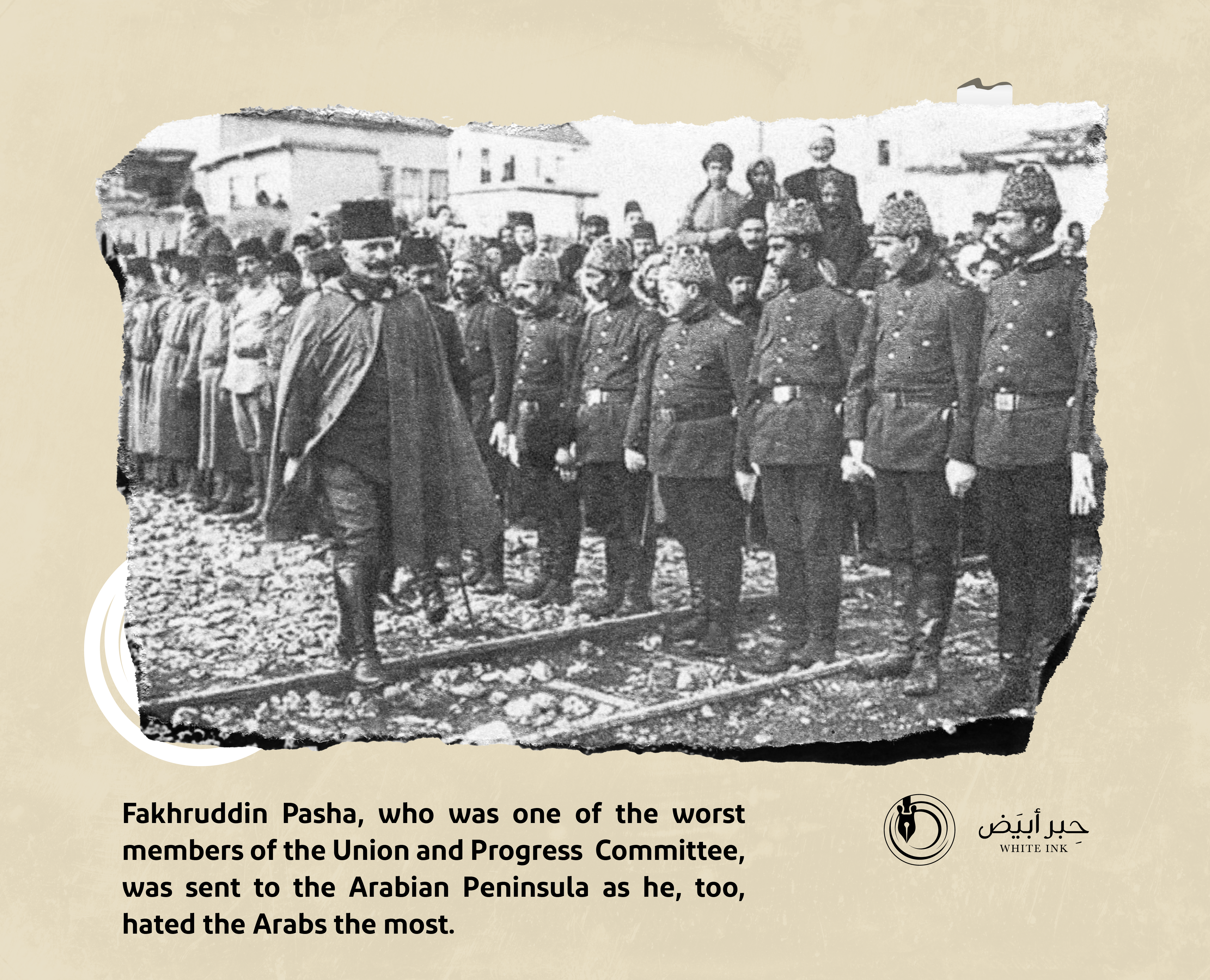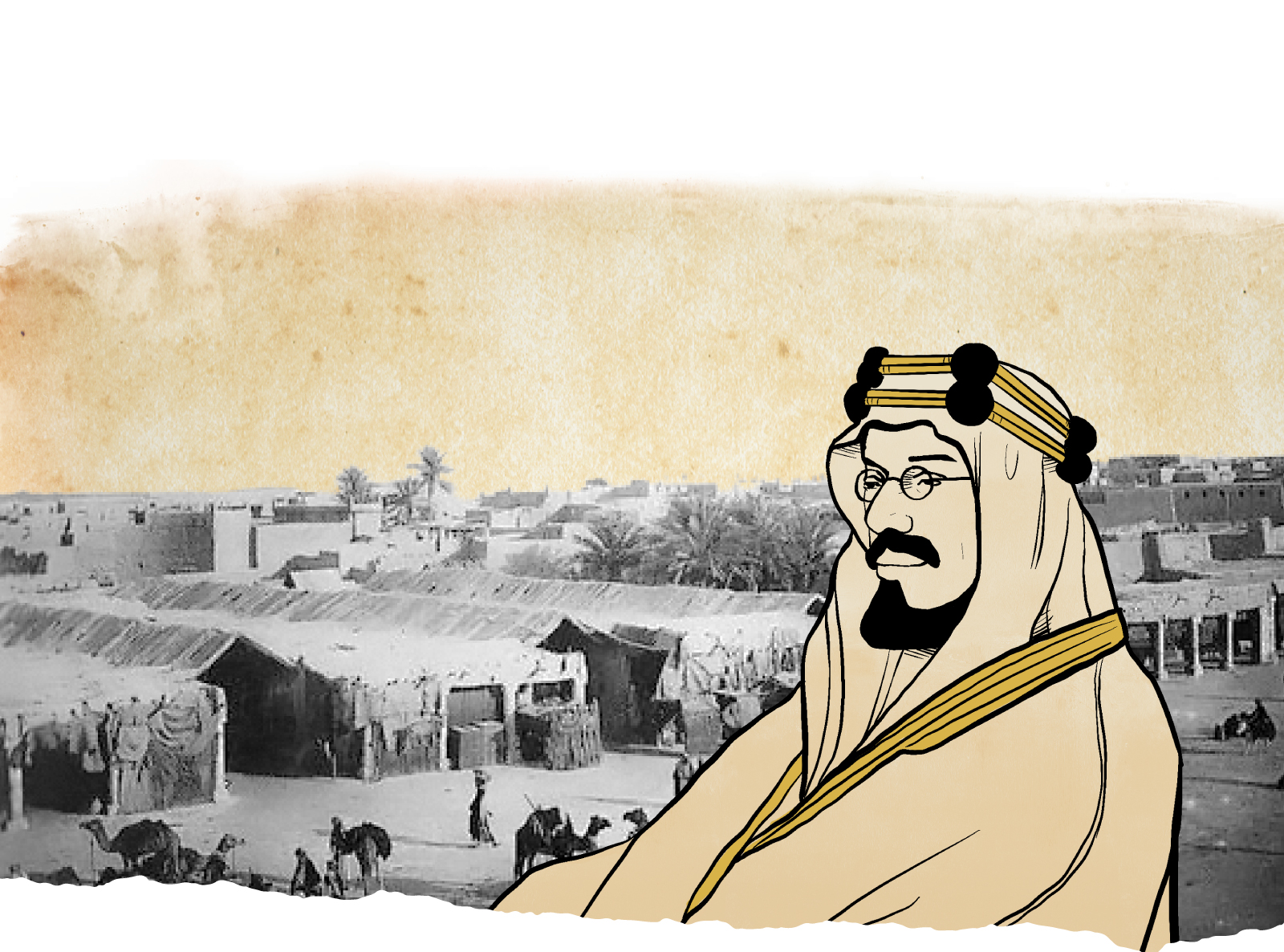
They attempted a political manipulation by changing the balance of powers
The Founder, King Abdulaziz cut off the Ottoman hand of treachery that tried to interfere in the Arabian Peninsula
The victory of King Abdulaziz bin Abdul Rahman (may he rest in peace) in Al-Qassim and his ability to defeat his opponents after the Battle of Rawdat Muhanna (1906), and the subsequent events and changes in the positions of some local forces presented a dangerous warning, prompting the Ottoman Empire to be extremely cautious about its influence in the Arabian Peninsula and the influence of these local power that submitted to the Turks.
Therefore, the Ottoman Turks sought to use several methods to limit the commencement of the Saudi unification movement led by the founder, King Abdulaziz; they took the method of conciliation and approval ostensibly as a way to do so. While in fact they provided direct and strong hidden support to the local forces subservient to them, in order to fight back King Abdulaziz, and to ensure this, the Ottomans sent a large shipment of weapons and ammunition to one of the local founder’s opponents via the Hijaz Railway, and encouraged their governor in Hijaz, Sharif Hussein bin Ali to conduct a military move against King Abdulaziz, in an attempt by them to overturn the situation and change the balance of powers against King Abdulaziz, to facilitate the idea of attacking the Saudis from the Persian Gulf, as they were occupying Al-Ahsa at that time.
King Abdulaziz’s recovery of Al-Ahsa and Qatif and the fact that he managed to expel the Turks from both regions, was a great shock to the Ottoman Empire and other regional powers in the area, as he robustly turned the scales of the situation in favor of the Saudis to be united. due to the importance of Al-Ahsa as a strategic location on the coast of the Arabian Gulf, and a portal to the outside world. The Ottomans tried to send a military force from Iraq by sea to re-occupy Al-Ahsa and Qatif, but international circumstances and their weak and deteriorating position at the time prevented them from implementing that scheme, so the Turks took another approach, in an attempt to find an appropriate political solution between the two parties, so they sent a delegation headed by Mr. Talib al-Naqib and met in Sobeihiya with King Abdulaziz in an attempt by the Ottomans to lure King Abdulaziz in their favor.
The Ottomans were not satisfied with the political move, but they took another path, which is to support the local forces who stood against Saudi unification, with money and weapons, as happened with Wahib Pasha, who agreed with the Turks to provide him with four columns to march towards Al-Ahsa and occupy it after it was recovered by King Abdulaziz. The meeting of Al-Subayyah spoils that scheme. As a matter of fact, the Ottomans were unable to carry out military action against Al-Ahsa.
The Ottomans publicly pretended to conciliate while they were secretly supporting opponents with weapons and money.

The founder, King Abdulaziz, was aware of the double Turkish role, in dealing with him peacefully from one side and treacherously by supporting local and tribal forces against him for many years, on the other. We find this clearly stated in his many important correspondences, in which he revealed the link between these local and tribal forces closely with the Ottoman Turks, and confirmed by documents preserved in the archives, and that they were like tools manipulated by the Turks to move against the Saudis, sometimes with money and other times, with weapons. This was support for the forces opposed to King Abdulaziz, with the aim of changing the political conditions in favor of the Turks and in favor of the forces that submitted to them and their colonization.
Correspondence with King Abdulaziz revealed his awareness of the ploys of the Ottomans.

King Abdulaziz managed to firmly and robustly stand against the Ottomans, after his great victory by which he expelled the Turks from Al-Ahsa. This victory was a significant strategic victory, considered by some thinkers an act of wisdom, where he challenged the surrounding internal conditions, the international changes, and the deterioration of the Ottoman Empire’s conditions. Therefore, King Abdulaziz sought to take proactive steps in order to recover Al-Ahsa with intelligence, experience, and cunning, and to robustly confront the local forces allied with the Turks against him, and with determination to increase his Influence in Arabian island.


- Ahmad Al Faya , The relationship between King Abdul Aziz and King Hussein bin Ali included Hijaz 1328 – 1344 Hijri / 1910 – 1925 AD (Riyadh: , King Abdulaziz Foundation (Darah(, 2012).
- Amin Alrihani, Date of Najd and its annexes, 5th ED (Riyadh: Manshourat Al Fakheriya, 1981).
- Hafiz Wahba, Arabian Peninsula in the twentieth century (Without Date: Writing and translation committee, 1935).
- Khair Aldin Alzarkali, Peninsula in the reign of King Abdulaziz, 3 Edition, (Beirut: Dar El Ilm Lilmalayin, 1985).
- Abdullah Uthaymeen, History of the Kingdom of Saudi Arabia, (Riyadh, Obekan Bookstore, 1995).
- Njdah Sfwh, History of the Arabian Peninsula in the British Documents (London: daralsaqi, 1996).
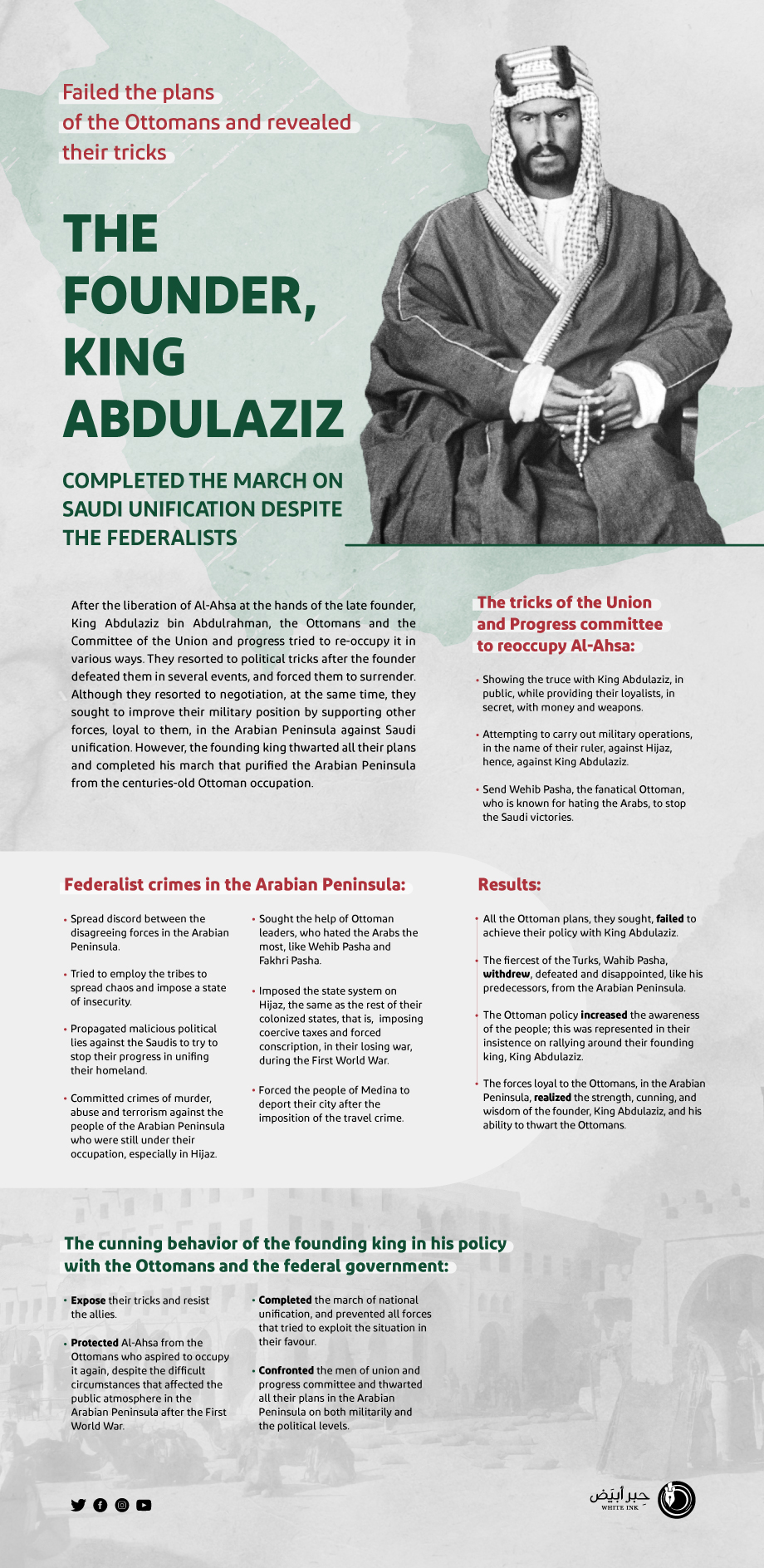
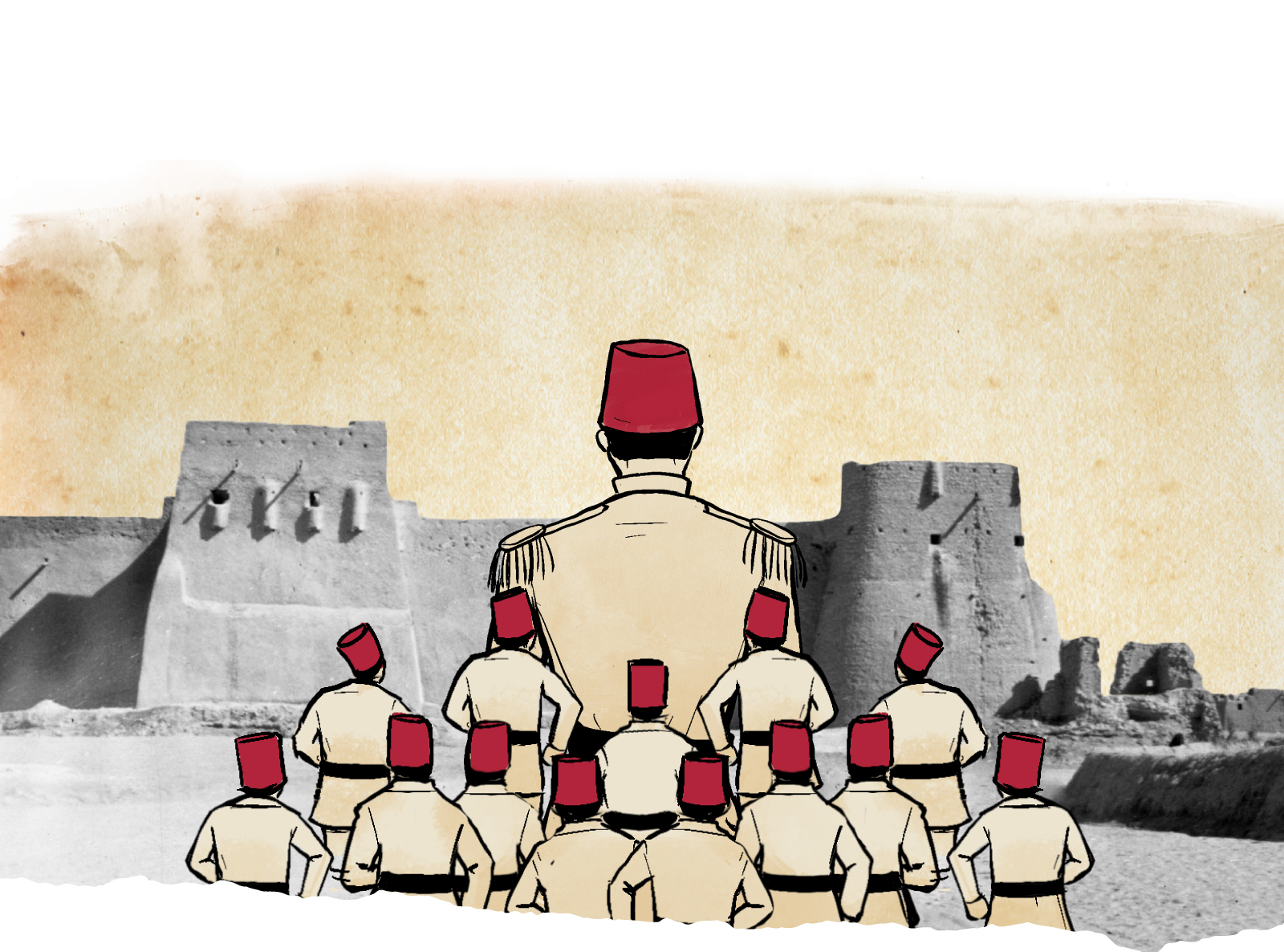
In a repeated scene of the Turkish failure in the face of the Saudis
The Ottomans sent Wahib Pasha, their most anti-Arab leader, to reoccupy Al-Ahsa
The Ottomans sought to prevent the unification of the Arabian Peninsula by the late founder, King Abdulaziz. They knew for sure that this meant the absence and end of their existence in the Arabian Peninsula, so Istanbul sought to cause division and strife in all the regions it occupies, not only between the regions, but even between the tribes. They reached the point that they sought to cause strife among the members of the same family, in order to consolidate its influence, and this is what happened throughout the period of their occupation of the Arab countries.
The Ottoman Empire was sure that it had no legitimacy, no matter how hard it tried to change the facts and distort them in front of the local population. In the end, it was nothing but an occupier of the land and colonizer of the population. The legitimacy it claims is nothing but an occupation and expropriation of Arab lands. Therefore, the Ottomans were entrenching a distorted concept of their legitimacy by shedding pure blood that they unjustly abused in order to spread terror in the heart of all those who tried to reveal their truth and highlight their falsity. They practiced it with oppression and tyranny against the Arabs in their countries.
The Ottomans and their governor in Hejaz did not succeed in achieving any result in confronting King Abdulaziz's unification of the Saudi borders.

On the other hand, the founder, King Abdulaziz bin Abdulrahman, was distinguished by his authentic Arab race, leaning on an authentic history, drawing inspiration from the heroes who preceded him from the Imams of Al Saud and a great people who believed in his Imams and kings. It was what prompted everyone to support him and believe in his project. At the same time, he worked to recover the lands of the Arabian Peninsula occupied by the Ottomans, whose inhabitants were longing for their Saudi state because they believed in it and were aware that it was the most capable of their safety and their national security.
Al-Ahsa was the eastern garden of the great Saudi homeland, its window on the Arabian Gulf, and its port closest to the center of the state. That is why King Abdulaziz and the Saudi Imams in the first and second state were keen to ensure that Al-Ahsa remained within its natural national framework. That is what made its residents longing for their freedom within their Saudi national framework, and made Al-Ahsa hurry to the founder, King Abdulaziz, to remain belonging to the homeland and to expel the hateful Ottoman occupation.
King Abdulaziz’s control of Al-Ahsa aroused hatred and envy in the hearts of the Ottomans, who made every effort to restore it, including plotting against him and spoiling any rapprochement between him and other powers. The Ottoman Empire quickly sent new Ottoman leaders to the Arabian Peninsula after it sensed the danger of liberating Al-Ahsa. The choice was always on the strongest and fiercest and the believer in the Turkification project and the superiority of the Turkish element over the Arabs. There were many events in the Arab countries, starting from the Levant to the south of the Arabian Peninsula, passing through Najd, Al-Ahsa, Hijaz, Egypt, Iraq and all the countries of the Arabs.
King Abdulaziz performed his role towards his people and the kingdom of his forefathers. After subjugating Najd, Al-Qassim and Al-Ahsa, the Ottoman Empire felt a grave danger to the rest of the provinces, so it rushed to send a new Ottoman governor to rule Hejaz, whose rank was higher than that of its governor, Sharif Hussein bin Ali. That governor was Wahib Pasha, who was described by the Lebanese Muhammad Rashid Reda, saying: “They sent Wahib Pasha to rule Hijaz in order to prepare for that matter because he was one of the senior officers known for their extreme hatred and contempt for the Arabs”.
At the same time, Sharif Hussein in Hejaz was suffering from the ups and downs of his affairs with the Ottomans in Istanbul and saw that the rule of the Saudis was returning to its previous era. As soon as the governor of Mecca knew that King Abdulaziz was facing strife and was in the process of resolving it, he marched with his forces and reached Al-Quway’iyah. That is what made the founder, King Abdulaziz, postpone resolving the internal strife until he finished dealing with the Sharif campaign.
The governor of Mecca was preoccupied with the Ottoman leaders in inter-conflicts because of their belief in their prior failure.

The governor of Mecca was unable to confront King Abdulaziz politically or militarily, and his campaign ended without any positive result. That is what prompted him to receive the opponents and seditious inside Saudi Arabia in order to achieve at least one result in his favor, or to use them as a card in his political situation.
Wahib Pasha entered the scene in order to completely change the situation. The sources confirm that Wahib was targeting Al-Ahsa to facilitate the occupation of Najd, as he had dreamed of. He promised to prepare four Ottoman battalions to enter Al-Ahsa, but the inevitable conflict between Sharif Hussein and Wahib Pasha prevented this and confused the situation between them. The manifestations of suspicion and mistrust between them increased and they used spies against each other, which delayed their project against the Saudis, who were taking quick steps towards recovering the borders of the homeland.


- Ahmed Al Fayie, The Relationship between King Abdulaziz, King Hussein bin Ali and the annexation of Hejaz 1328-1344 A.H / 1910-1925 A.D (Riyadh: King Abdulaziz Foundation for Research and Archives, 2012).
- Amin Al-Rihani, The History of Najd and its Appendices, 5th edition (Riyadh: Al-Fakheriya Publications, 1981).
- Hafez Wehba, The Arabian Peninsula in the Twentieth Century (Writing and Translation Committee, 1935).
- Khair Al-Din Al-Zarkali, The Arabian Peninsula in the Era of King Abdulaziz, 3rd Edition (Beirut: Dar Al-Ilm LilMalayin, 1985).
- Abdullah Al-Othaimeen, History of the Kingdom of Saudi Arabia (Riyadh: Al-Obeikan Library, 1995).
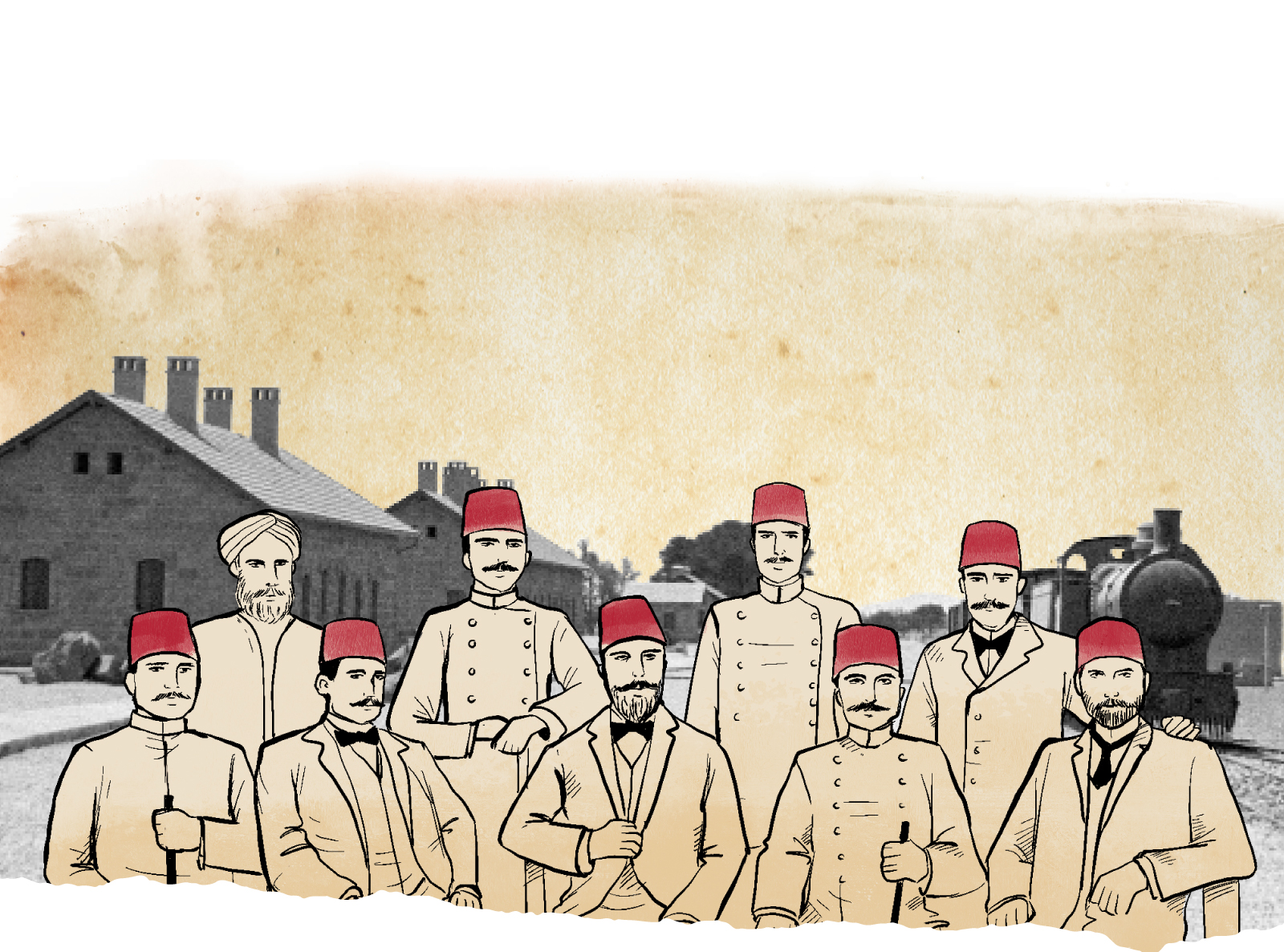
They incited the political forces against King Abdulaziz
The Committee of Union and Progress sought to implement the policy of the Ottoman Sultans, which is to insist on occupying the Arabian Peninsula
If one traces the years prior to the outbreak of World War I (1914), and the entry of the Ottomans into it, one should realize that they were such difficult years for the Ottoman Empire, especially with the men of union and progress taking power, and their last attempt to gather what was left from the colonized states, which began to perish, and in the midst of a series of external defeats and internal turmoil, which heralded the imminent fall of the state. The Arabian Peninsula has always been considered an important point in the policies of the men of union and progress, hence, aspiring to maintain the Ottoman presence in the Arabian Gulf; therefore, confirming their hegemony, and their occupation of Hejaz to gain the religious propaganda that they derive from their occupation of the Two Holy Mosques, hence, conferring a false Islamic legitimacy on them. This is, in addition to, protecting Hejaz Railway that was established to impose their control and to ease their access of military supplies to confirm their military presence not only in Hijaz, but also in the whole Persian Gulf and Yemen.
The men of union and progress took advantage of the dispute between the nobles, at the time, Sharif Ali Haidar and Sharif Hussein bin Ali, over the Emirate of Mecca. Sources indicate that the men of union and progress, initially, allied with Sharif Ali Haider, and were angry with Sharif Hussein due to his strong previous relationship with the Red Sultan Abdul Hamid II.
But the matter changed when the men of union and progress agreed to give the emirate to Sharif Hussein bin Ali after forcing him to follow their policy, which aims to confront the local forces in the Arabian Peninsula, especially in Aseer and Yemen, and in particular King Abdulaziz Al Saud. And the federalists focused their efforts on making Hejaz a focal area for them, in addition to Istanbul’s need for the Emir of Mecca to succeed in extending the Hejaz railway, and to protect the line from Bedouin attacks. This line had reached Madinah in the year 1908, and there was an Ottoman desire to extend this line to reach holy Mecca.
Accordingly, the Unionists, in the Ottoman government, issued their decision to appoint Hussein bin Ali as Emir of Mecca in 1908, and it did not take long until the intentions of the Unionists towards King Abdulaziz became clear. In 1910, the men of Union and Progress ordered the Emir of Mecca to move to confront the local forces in region, hence, a campaign went against the Idrisid family in Aseer. But, the biggest confrontation was against King Abdulaziz.
Ameen Rihani states that the campaign of the Emir of Mecca on Al Qassim and Najd was in fact a “service to the unionists.” Abdullah bin Al Hussein says, in his memoirs, published in Jerusalem in 1946 that the Grand Vizier Hakki Pasha wrote to him in the year 1910 and asked him to inform his father Hussein to help them against King Abdulaziz Al Saud. The unionists continued to impose pressure upon the Emir of Mecca to incite forces against King Abdulaziz. Maneuvers continued between the Unionists and the Emir of Mecca, on the one hand, and the founding king, on the other. According to the Egyptian historian Mr. Rajab Haraz, this continued throughout the period from 1910 to 1913.
The men of union and progress Committee used their Ottoman Wali of Mecca to stop the victories of the founder King Abdulaziz.

Finally, The Ottoman governor of Mecca, Hussein bin Ali, realized the bad intention of the federalists towards the entire region, especially after they followed the policy of administrative centralization, and abolished some of the privileges of his emirate. As a result, the Emir of Mecca moved away from the Federalists and their policy, and his attitude towards them changed, especially during the First World War. That paved the way for him later, when the decision was made to start revolting against the Ottomans from his state, and in the light of which he took advantage of the resentful feelings of the Arabs against the Ottoman occupation by employing them in his revolution, which aimed to establish a kingdom of his own.


- Ameen Rihani, The History of Najd and Its Appendices, 4th Edition (Beirut: Dar Al-Rihani, 1970).
- Hafez Wahba, The Arabian Peninsula in the Twentieth Century (d.d.: Committee for Composing and Translating, 1935).
- Khair Al-Din Al-Zarkali, The Peninsula in the era of King Abdulaziz, 3rd Edition (Beirut: Dar Al-Ilm for Millions, 1985).
- Rajab Haraz, The Ottoman Empire and the Arabian Peninsula (1840-1909) (Cairo: d.n., d.t.).
- Abdullah Uthaymin, History of the Kingdom of Saudi Arabia, 12th Edition (Riyadh: Al-Obaikan Library, 2003).




